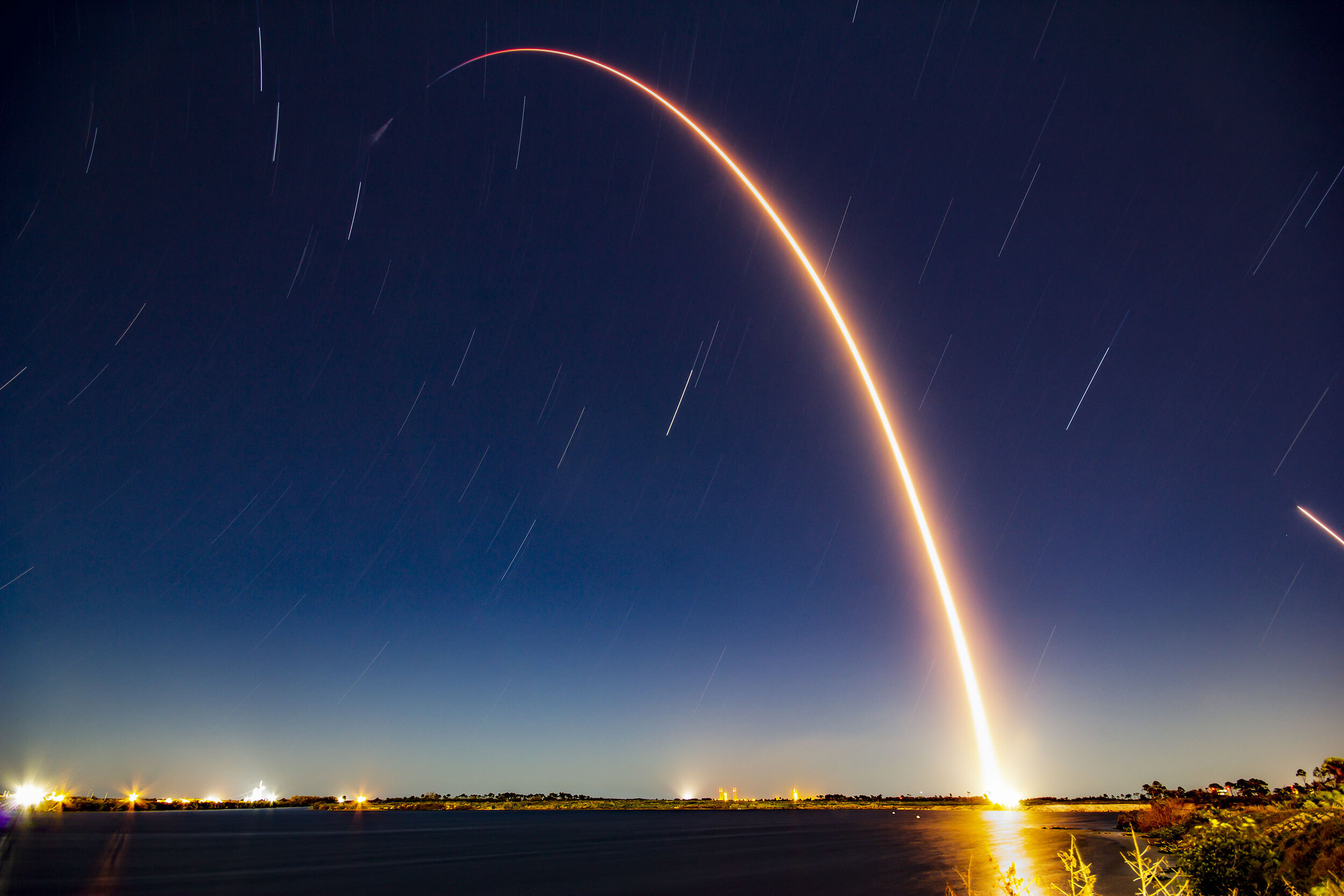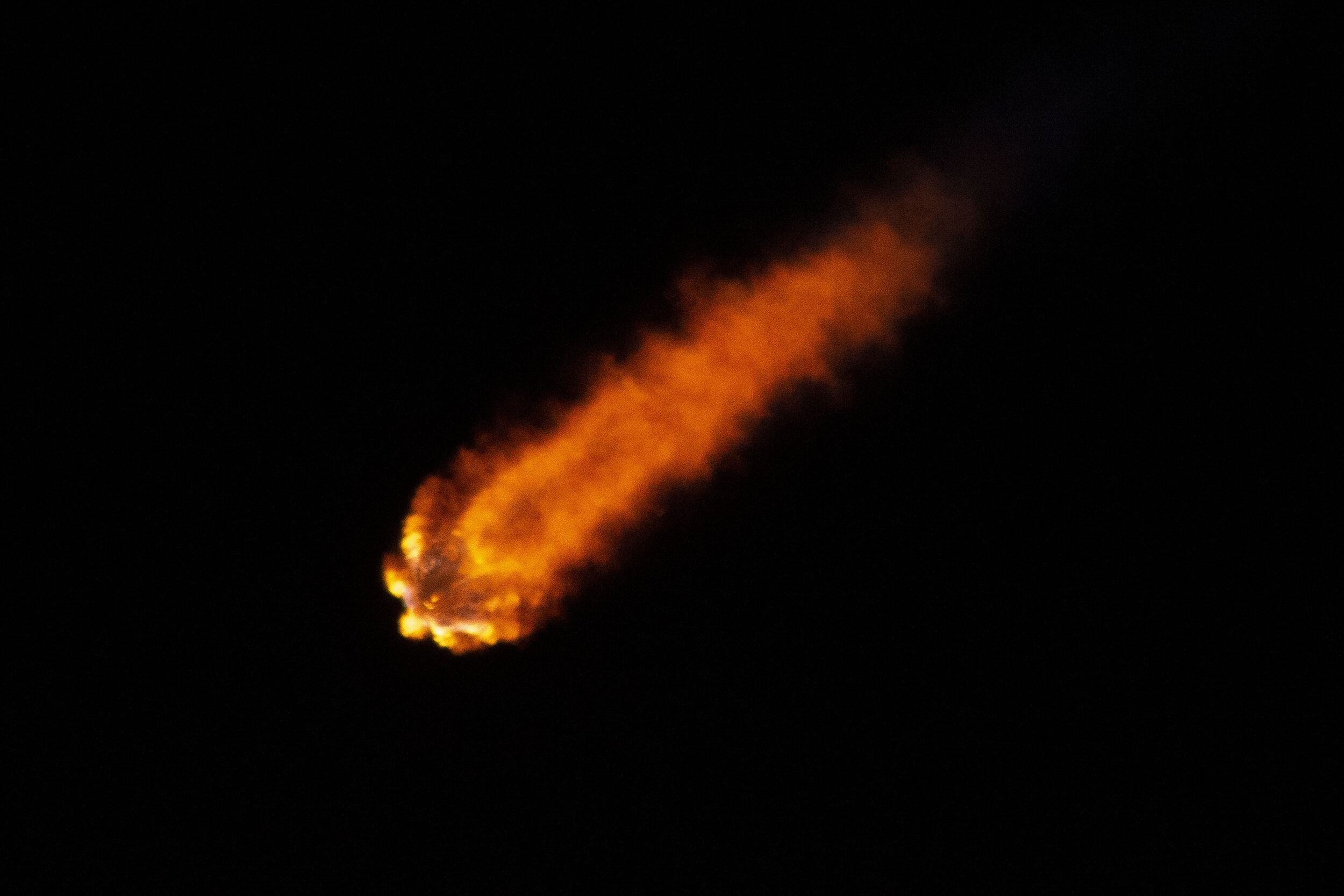One last time: Final Dragon 1 launches cargo to ISS
/For the final time, a first-generation Dragon spacecraft has taken to the skies to send cargo to the International Space Station. The SpaceX CRS-20 mission was also the final flight under NASA’s original Commercial Resupply Services contract.
Perched atop a Falcon 9 rocket, liftoff took place at 4:50 a.m. UTC March 7, 2020, from Space Launch Complex 40 at Cape Canaveral Space Force Station in Florida. This was the third flight for this particular capsule, which previously flew the CRS-10 and CRS-16 missions in February 2017 and December 2018, respectively.


Inside the CRS-20 Dragon is 1,977 kilograms of supplies and equipment bound for the Expedition 62 crew aboard the orbiting outpost, including a new commercial research platform called Bartolomeo.
The launch performed flawlessly, placing Dragon in a parking orbit some nine minutes after liftoff. Additionally, the first stage of the rocket successfully returned to Landing Zone 1 at Cape Canaveral Space Force Station. This was the 50th time any Falcon 9 first stage was successfully recovered, by land or by sea.
Now in space, the spacecraft is expected to take approximately two days to reach the ISS. On the morning of March 9 Dragon is set to fly itself to an area about 10 meters beneath the Destiny laboratory module where NASA astronaut and Expedition 62 Flight Engineer Jessica Meir will use the robotic arm to capture the cargo freighter. That is anticipated for about 10 a.m. UTC.
From there, it will be moved to the Earth-facing port of Harmony to be attached to the ISS for about a month. CRS-20 joins three other visiting vehicles at the outpost: Soyuz MS-15, Progress MS-13 and NG-13 Cygnus.
A decade of history-making missions
The first launch of a full first-generation Dragon spacecraft took place on Dec. 8, 2010. It was just a basic test of the features of the spacecraft and wasn’t designed to visit the ISS. The overall flight time for this demo flight was just 3 hours, 19 minutes. It was also only the second flight of a Falcon 9 rocket.
It would be nearly 18 months — May 22, 2012 — before the second Dragon capsule would fly. Orbited by only the third Falcon 9 rocket, the second demo mission for Dragon went all the way to the ISS to become the first privately-built spacecraft to visit the orbiting laboratory.
In October 2012, SpaceX launched its first Dragon spacecraft under NASA’s $1.6 billion Commercial Resupply Services contract to the company — CRS-1.
Originally, the contract called for 12 flights to the outpost. However, that was extended to 15 missions in 2015 and ultimately to 20 in 2016.
During the eight-year operational life of Dragon 1, the spacecraft itself only experienced one major issue. Shortly after the separation of the CRS-2 Dragon on March 1, 2013, three of four thruster pods on the vehicle did not pressurize properly.
As such, the vehicle went into a passive abort mode and did not deploy its solar panels. Eventually, the SpaceX team performed a “command inhibit override” to deploy the solar panels before their actuator’s got too cold.
It was suspected a blockage in the helium line to the oxidizer tank for the thrusters was causing the low-pressure readings. To fix this, SpaceX commanded a valve to cycle multiple times to clear the blockage. Once all four pods were at full pressure, Dragon was able to continue on toward the ISS, albeit a day later than planned.
The CRS-7 Dragon launch. Just over two minutes into flight, the the rocket broke apart following an internal strut failure in the second stage. Credit: NASA
The only Dragon spacecraft to not reach its intended destination was the CRS-7 mission in June 2015 when the Falcon 9 rocket carrying the vehicle failed about 139 seconds into flight.
It was later determined a strut holding a helium tank inside the second stage failed, causing the oxygen tank to overpressurize and burst.
While the capsule survived the rocket’s breakup, it wasn’t designed to deploy parachutes during a launch failure. As such, it was destroyed when it impacted the ocean at terminal velocity. Also destroyed was the first International Docking Adapter planned for the ISS.
SpaceX fixed the problem within six months and returned the Falcon 9 to service before the end of the year. However, it wouldn’t be until April 2016 before another Dragon flew to the ISS.
Since then, all Dragon flights to the outpost have been successful. In fact, the company began re-flying capsules beginning with the CRS-11 mission in June 2017. All Dragon 1 missions utilized previously-flown capsules beginning with CRS-13 in December 2017.
In total, nine Dragon 1 missions to the ISS involved six previously-flown capsules. Three of those capsules, visited the outpost three times, including the CRS-20 mission.
Building on the success of Dragon 1
In 2016, SpaceX was selected along with two other companies to fly cargo to the ISS in the second Commercial Resupply Services contract. According to NASA, SpaceX is expected to fly a minimum of six missions using its upgraded Dragon 2 spacecraft, which first flew in its crew variant — Crew Dragon — in March 2019.
Starting with CRS-21 later in 2020, the cargo version of the Crew Dragon will be flown. Each of those are expected to be flown up to five times. However, the crew variants are not currently expected to be reused for NASA missions.
The next Dragon 2 launch is actually scheduled for no earlier than May 2020 and will involve sending NASA astronauts Doug Hurley and Bob Behnken to the ISS on a mission lasting at least a week. However, this Demo-2 mission could be extended by several months.
In total, the Dragon 1 spacecraft have spent more than 520 days attached to the ISS and delivered more than 43 metric tons of hardware, experiments and crew supplies to the outpost’s crews.
Additionally, some 35 metric tons of experiments and equipment have been returned to Earth as Dragon spacecraft are the only vehicle currently capable of significant down mass from the ISS.
Once the CRS-20 mission concludes, it will be detached from the outpost and, several hours later, be commanded to perform a deorbit burn to return to Earth, splashing down in the Pacific Ocean just off the coast of Baja California.
Following its return to shore, the capsule’s return cargo will be offloaded. After that, it’s unclear where the existing Dragon fleet will end up. But it’s possible they will be distributed to museums or NASA facilities for eventual display.
Currently, two Dragon spacecraft are on display — one at SpaceX’s headquarters in Hawthorne, California, and the other at Kennedy Space Center, Florida.






